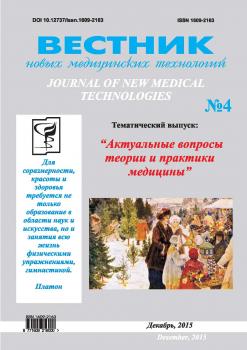The method of Constraint-Induced used in the international practice to restore movement in paretic upper extremities. This technique consists in fixing the hands intact, thus all actions necessary, the patient is forced to make the paretic limb. The method is effective, easy to use, doesn’t to require financial expenses. The authors proposed this method of Constraint-Induced to restore movements of the lower limbs in the patients with the syndrome of the central hemiparesis. Increasing the load on paretic limb was achieved due to movement restrictions in the intact limbs. With this purpose the apparatus of the hip joint with a locking arm was used. Movement in the intact limb becomes impossible and paretic leg became the leader. An objective assessment of the functions walk in the study was carried out by means of laser rangefinder method; clinically function walk was estimated by Dinamic Gait Index. Results: in the group of the patients treated by the Constraint-Induced lower limbs method were obtained reliable differences from the group of the patients who received only traditional methods of rehabilitation. This method can be recommended for application in the course of neuro-rehabilitation syndrome of the central hemiparesis.
central hemiparesis, walking, method of Constraint-Induced, laser rangefinder, step asymmetry
Метод Constraint-Induced (CI) – метод ограничения движений – является одним из наиболее эффективных в восстановлении движений в верхней паретичной конечности при синдроме центрального гемипареза. Данный метод разработан Эдвардом Таубом и заключается в «выключении» интактной руки из процесса тренировки и повседневной жизнедеятельности [7]. В заданных условиях больному приходится задействовать все резервные возможности паретичной кисти. Эффективность применения CI-терапии сопоставима с занятиями с использованием аппаратов робототехники, но при этом практически не требует финансовых затрат [1,5]. В России данная методика используется относительно редко [4].
Цель исследования – на основании принципа CI-терапии создать метод коррекции функции ходьбы при синдроме центрального гемипареза. Понятно, что полностью исключить из ходьбы одну нижнюю конечность невозможно, но возможно попытаться сделать паретичную ногу ведущей, «основной» при ходьбе.
Для решения цели исследования интактная конечность больного с синдромом центрального гемипареза фиксировалась в аппарате для тазобедренного сустава с зам-
1. Kadykov AS, Chernikova LA, Shakhparonova NV. Reabilitatsiya nevrologicheskikh bol´nykh. Moscow: MED-press-inform; 2009. Russian.
2. Pokhabov DV, Abramov VG, Nesterova YuV. Metodologiya i novye vozmozhnosti korrektsii narusheniy khod´by pri parkinsonizme. Vestn. ros. voen.-med. akademii. 2010;4 (Pril.):72-6. Russian.
3. Prokopenko SV, Ondar VS, Abros´kina MV. Sindrom tsentral´nogo gemipareza i narushenie ravnovesiya. Vestnik vosstanovitel´noy meditsiny. 2012;5:23-7. Russian.
4. Alexander NB, Goldberg A. Gait disorders: Search for multiple causes. Cleveland Slin. J. Med. 2005;72(7):586-600.
5. Huang WC, Chen YJ, Chien CL, Kashima H, Lin KC. Constraint-induced movement therapy as a paradigm of translational research in neurorehabilitation: reviews and prospects. Am J. Transl Res. 2011;3(1):48-60.
6. Herman T, Inbar-Borovsky N, Brozgol M, Giladi N, Hausdorff J.M. The Dynamic Gait Index in healthy older adults: the role of stair climbing, fear of falling and gender. Gait & Posture. 2009;29(2):237-41. Russian.
7. Wolf SL. Revisiting Constraint-Induced Movement Therapy: Are We Too Smitten With the Mitten? Is All Nonuse ´´Learned´´? and Other Quandaries. Phys Ther. 2007;87;1212-23.





